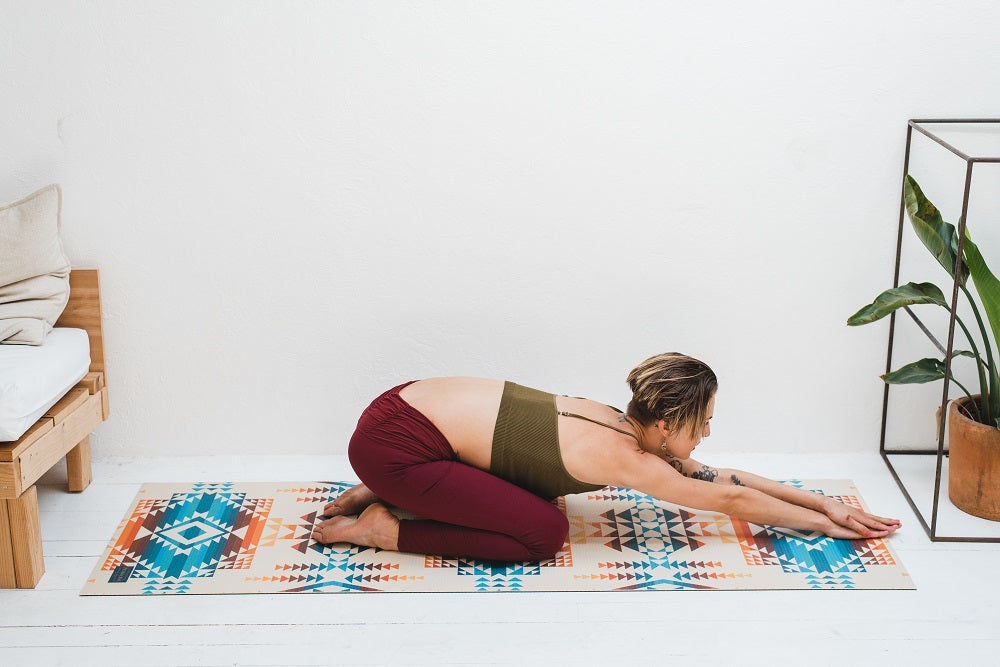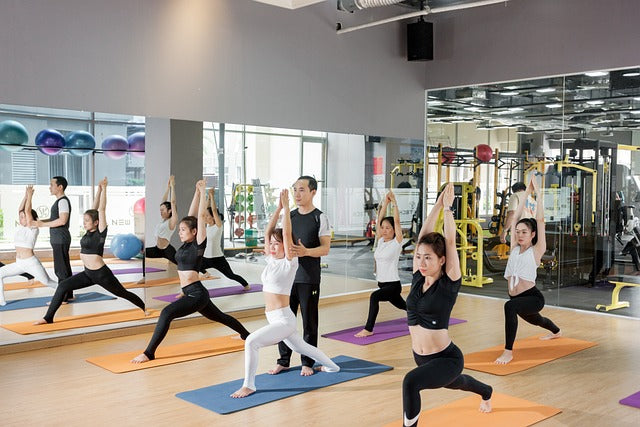Article: How to choose the right yoga mat for meditation?

How to choose the right yoga mat for meditation?
There are a few things to think about when choosing the right yoga mat for
meditation. Trying to buy on the spur of the moment is a bad idea.
To avoid buying the wrong yoga mat, especially if it is your first, you should know
exactly what you need. Is your practice more meditative or non-meditative?
If your yoga practice is largely meditative, which would mean that the styles you
practice are yin yoga, restorative yoga, and yoga therapy, then certainly not every
yoga mat is for you and your practice.

HOW TO MAKE A DECISION?
More demanding styles of yoga, such as Ashtanga, Vinyasa, or yoga sequences, require yoga mats that have a good grip. Such styles prefer yoga mats that are generally thinner. Although one should keep in mind that this is not the main factor when one decides to buy a yoga mat related to these styles, the main and decisive factor is precisely the grip that a yoga mat provides.
We will consider a deeper insight into the selection of suitable yoga mats when it comes to these styles in one of the following articles. Now, though, we want to talk about how to choose the right yoga mat for what are called "gentler, opening" yoga styles.
Considering that we are talking about slower styles of yoga, we can safely say that these styles are, on the one hand, very meditative. However, it should be kept in mind that even though these are slower, more meditative styles, they can still be challenging for most people. Why?
Because these styles are also very open for the whole body. Such styles can be challenging for most people, considering that people today spend most of their day sitting. Such a way of life closes their bodies. Consequently, any opening of their body through yoga postures can be very challenging for them. In case you are at the beginning of your practice within one of these styles, keep in mind that the most important thing is to perform each pose within the limits of your body's comfort. Allow your body to open itself naturally. Be assured that it will be necessary; therefore, it is up to you to be patient and to progress class by class.
Yoga mats that “open” up your whole body are ideal for these styles of yoga.

What does it imply?
These are yoga mats that, by design, enable the practitioner to completely submit to his practice. The thickness of the yoga mat itself is the most important consideration when selecting a yoga mat for various types. The thickness of the mat may range between 1 mm and 12 mm. You should avoid buying mats with a thickness of less than 5 mm for these yoga styles. Yoga mats with a thickness of 5 mm and above are appropriate for these styles. If you have joint difficulties or want extra support, use the thickest mats available, preferably 10 mm or more. The thicker the mat, the greater the sense of total relaxation. This enables you to do certain yoga poses more accurately. These mats cannot be used in more active styles of yoga, such as Ashtanga and Vinyasa.
Another consideration when selecting mats for these styles is the length of the mat itself. The mat's length may range from 173 cm (68 inches) to 216 cm (85 inches). You should never purchase a mat that is not at least near to your height.
One of the most significant factors for certain practitioners is the length of the mat itself. They just do not want to touch the floor outside of the mat at the end of the class when reclining in the Savasana pose. They want to lay down the whole length of their bodies on the right yoga mat, head to toe.
MEDITATIVE GOAL
The primary goal of meditation is not to dissect the thoughts that race through our minds. It is totally normal to be conscious of our minds' continually shifting thoughts. The only thing that matters is that we do not examine them. This may be accomplished by seeing thoughts as shifting clouds in the sky. The mind represents the sky, and thoughts represent the clouds. Simply watch the thoughts as they shift, without attachment or analysis. We will become more conscious of our cognitive process in this way, but we will not be trapped by it. We will slow down the flow of thought in this manner, but it will never totally cease. We will acquire more attention if we do not analyze our thoughts.
MEDITATIVE PRACTICE
Since these are styles that allow you to relax while performing the poses themselves, they are defined as very meditative styles. So if you want to achieve a meditative practice during your yoga practice, then these styles are definitely the right choice for you.
While practicing these styles, you will be able to gain deeper insights and engage in self-analysis. You will have time to get to know yourself from the inside. You will have time to really deal with your inner being and know its needs and limitations. These styles of yoga will allow you to develop gradually both physically, mentally, and spiritually. Each of us develops and grows at our own pace. Do not compare the growth of your soul with the growth of others.
Accordingly, do not allow your ego to make certain comparisons with other practitioners, both physically and spiritually. Each of us is a soul unto ourselves; each of us makes our own decisions and has our own goals and ambitions. Each of us has our own development path.

CONCLUSION
Choosing the appropriate mat for these styles is certainly one of the most important factors in order to achieve the greatest benefit while practicing them.
In order to enjoy your yoga practice while at the same time developing spiritually, the first step towards that goal is to choose your yoga mat.
Your yoga practice begins with the right yoga mat.

